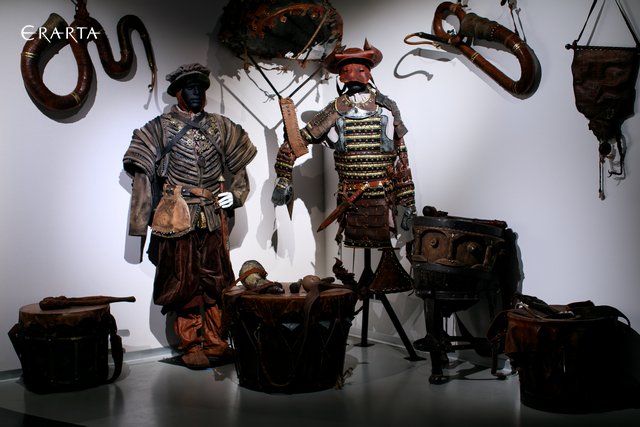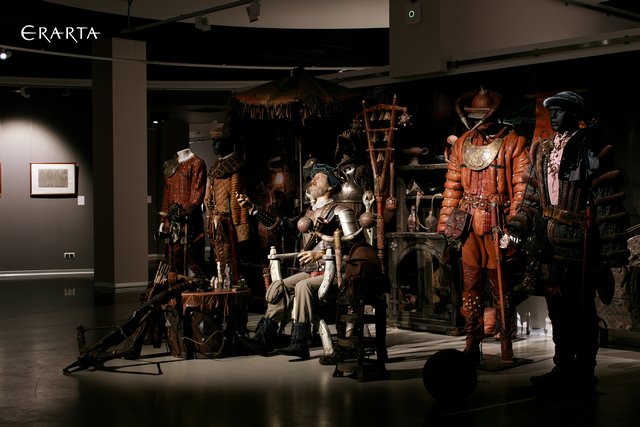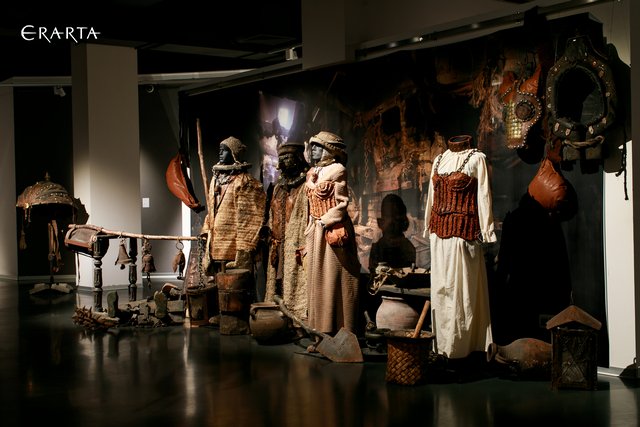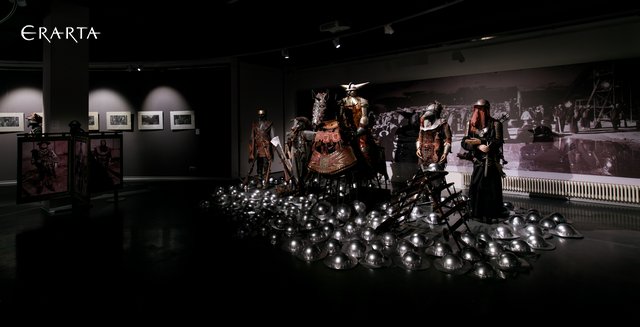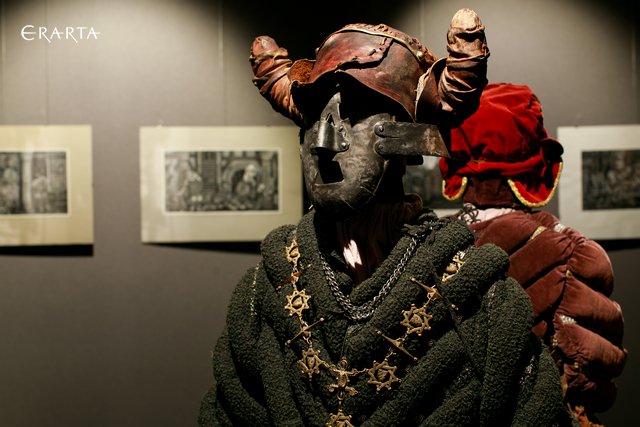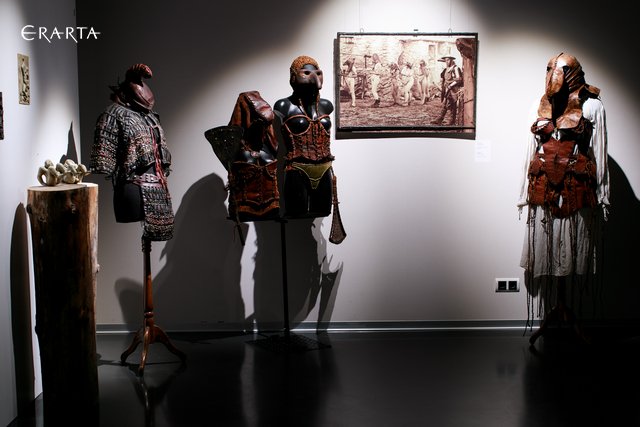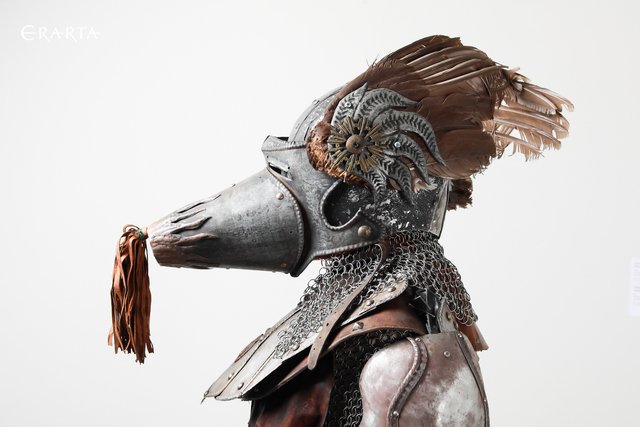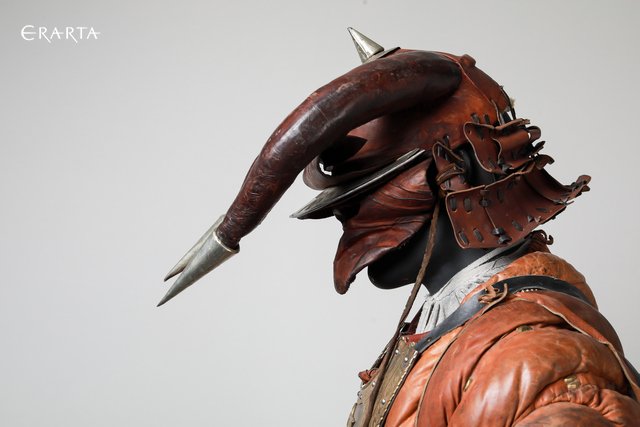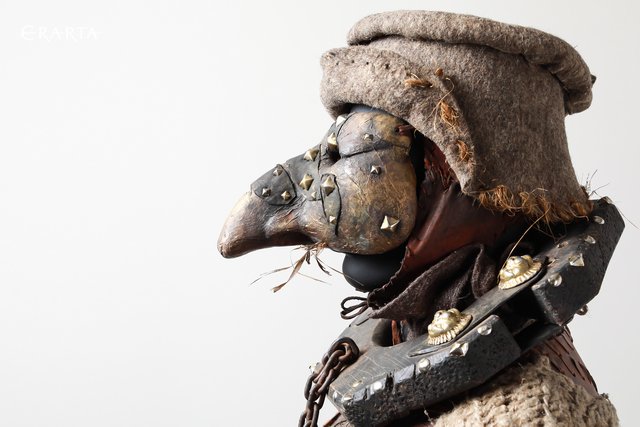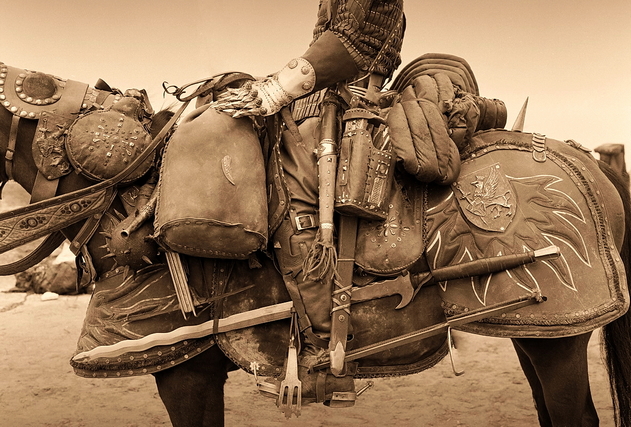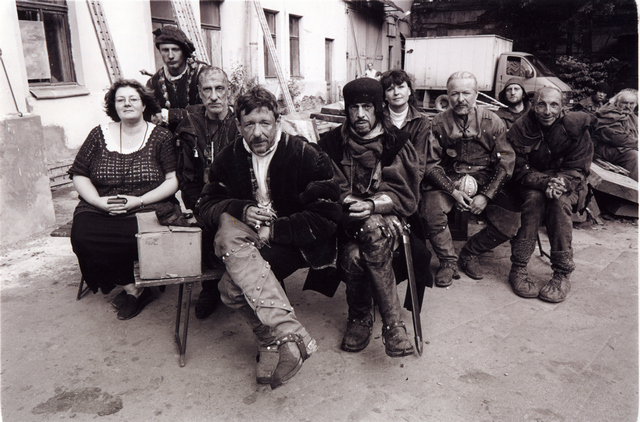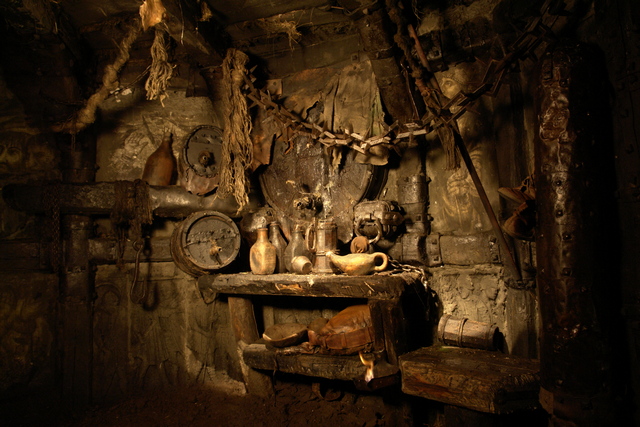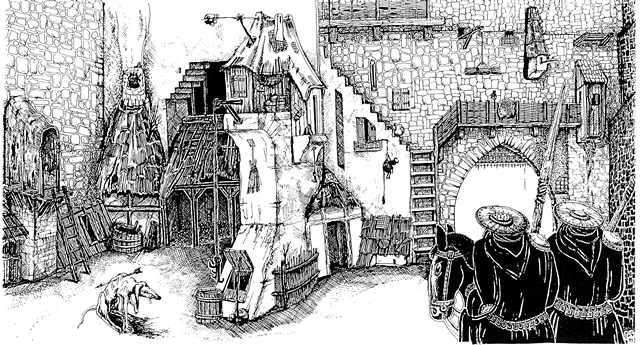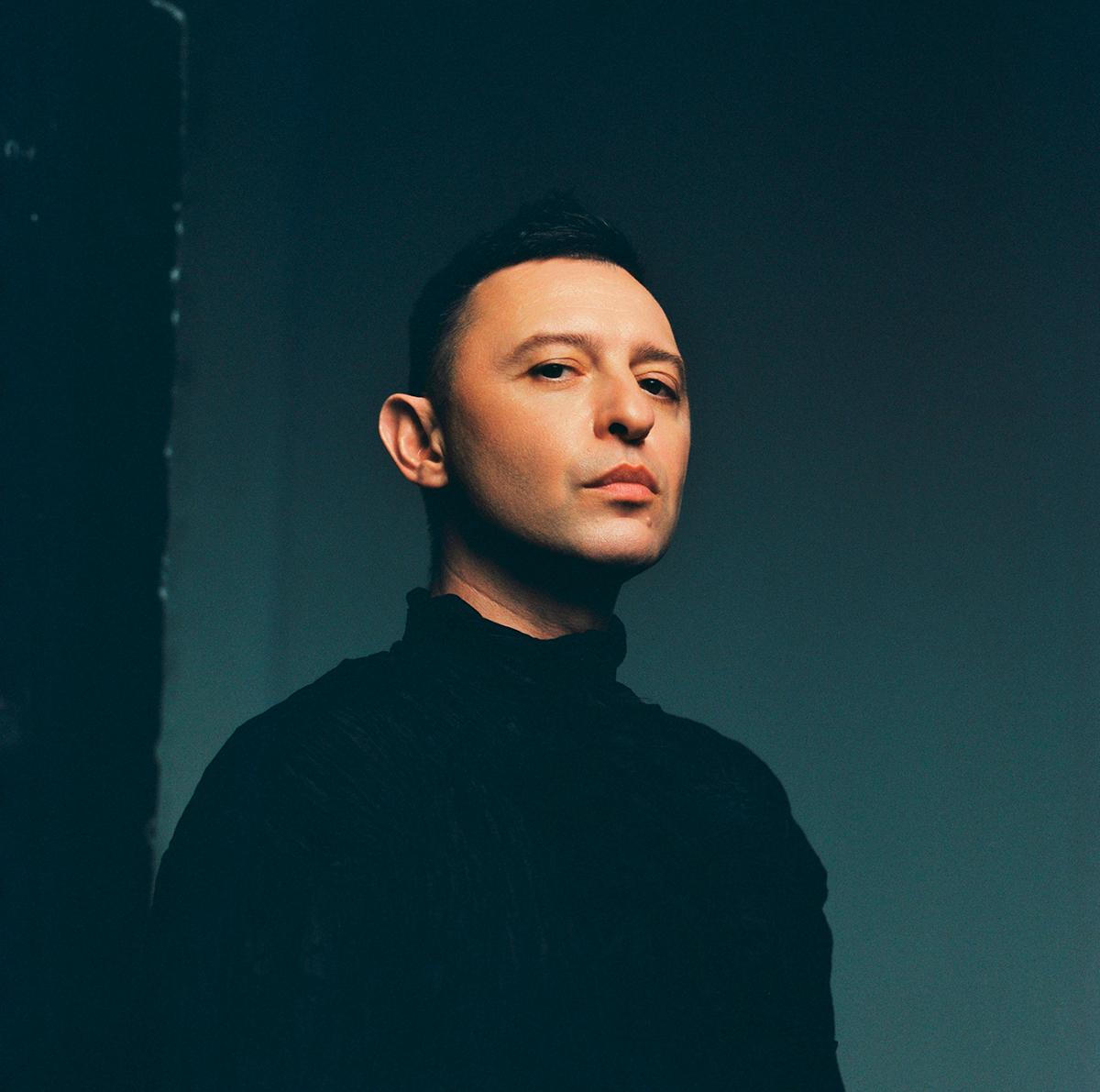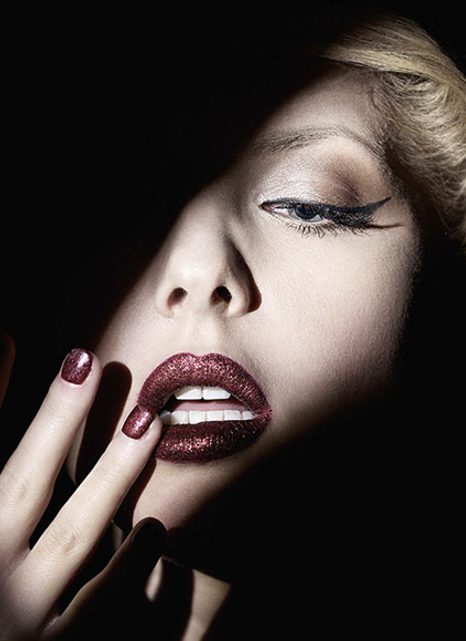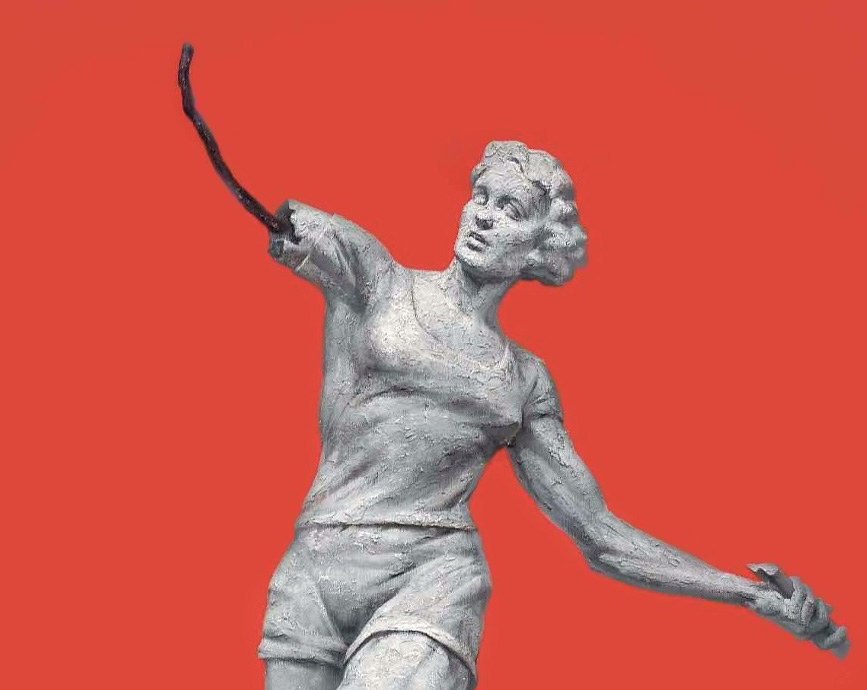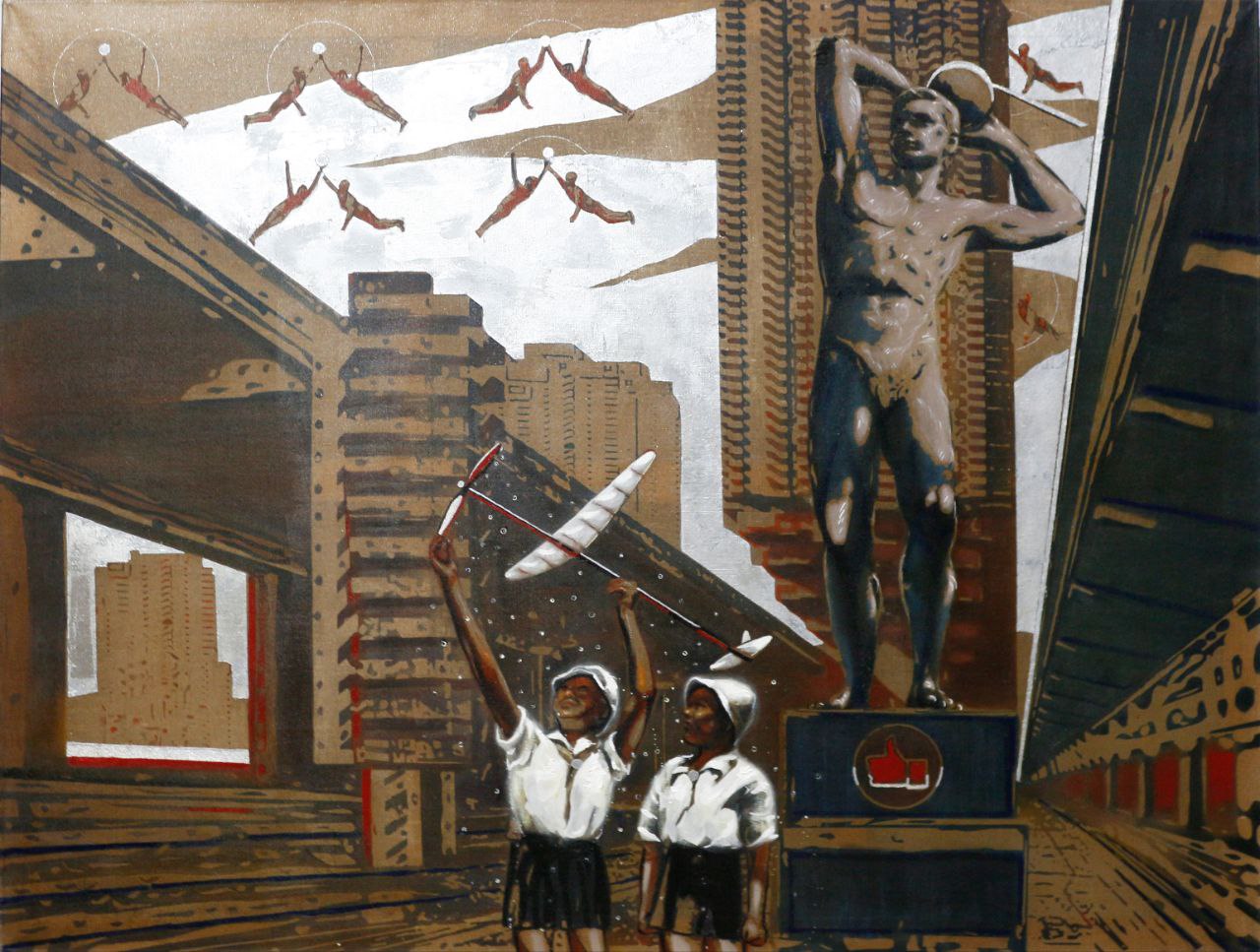Costumes and artefacts from a fictional world
- Mystery of creation of an imaginary world with its own culture and life stories
- Weapons, musical instruments, toys and various knickknacks
- Sketches and unique archival photographs
Aleksey German Senior’s motion picture “Hard to Be a God” is a true monolith, or rather, an iceberg within the Soviet and Russian intellectual culture of the 20th century which had broken off from the Strugatsky brothers’ universe as early as 1968 and was destined to forever drift in the realm of the sign system of art. The first screenplay loosely based on the acclaimed 1963 science fiction novel was written by the aspiring film director in collaboration with Boris Strugatsky just four years after the book had been published. The start of the film production was hindered by the overly cautious studio functionaries reluctant to deal with a social allegory right at the time when the Soviet troops invaded Czechoslovakia and suppressed the Prague Spring. By a fortunate coincidence, this was not a devastating blow for the young director. The disturbing phone call bringing bad news was overshadowed by his first meeting with future wife and collaborator Svetlana Karmalita. 32 years later ancient Czech castles will play host to the shooting of an entirely new adaptation of the Strugatskys’ novel based on a script by Svetlana Karmalita.
The film production lasted a good 14 years, and “Hard to Be a God” premiered as an already legendary motion picture following Aleksey German’s death. The critics were unanimous in recognizing the film as a landmark masterpiece of the late genius which it would take many years to interpret.
The exhibition presented by the Erarta Museum of Contemporary Art allows us not only to approach the film once again from a certain time perspective, but also to partake in the mystery of creation of an imaginary world with its own culture and life stories.
At the pre-production stage, during the casting and screen tests, production designers were faced with unlimited opportunities and hues. The costumes used in the legendary Lenfilm Studio productions like “Hamlet” and “The Beginning” were destroyed when the basement storage rooms were flooded with only a few armour sets surviving, forcing the filmmakers to relive and recreate the entire Middle Ages.
Photographer Sergey Aksyonov remembers Aleksey German as the pivotal figure who organised the surrounding creative chaos. According to the director’s assignment, the photographer spent six months in various museums and their storage rooms taking countless pictures of paintings, documents, drawings, etchings — any visuals from the Late Middle Ages. Finally all walls in the director’s room were covered floor to ceiling with 10 by 15 cm photos of period images. During the first six months of pre-production the whole crew carried around large format art books and came together for film viewings.
After carefully studying the history of costume from the late feudalism period, Ekaterina Shapkaits made a conscious effort to forget what she had just learned. Creation of fictional fashions called for exceptional feats of imagination.
For Ekaterina Shapkaits sketching the costumes for the supporting actors in Aleksey German’s movies was equal to inventing their personal histories where each detail — for instance, the footwear — tells the whole story of the character.
Sergey Kokovkin, who created the weapons, musical instruments, toys and various knickknacks like erotic pictures and statuettes, maintains that each object seen in the film has a specific function, and nothing was made for ornamental purposes. The director could not stand artifice and, noticing an attempt to somehow embellish Arkanar’s daily life, would consciously refuse to film a certain object. This probably also explains his deliberate departure from shooting in colour, often to the designer’s chagrin. Sergey Kokovkin’s designs are very precise; some pages are marked with the director’s comments and sign-offs. Following Aleksey German’s approval, the musical instruments, embossed metal ware, or torture tools would go into production. Metals, ceramics and wood were processed in the workshops and smithy of the Stieglitz Academy; the frescoes, sculptures and mechanical devices were made by the craftsmen of Lenfilm Studio’s set construction shop who luckily kept the old tricks of the prop making trade. Some tasks required that the designer possess not only some specific knowledge, but also the skill to use it in such a way so as to restrain his imagination within the boundaries of a certain style. In the course of the prolonged quest, in an attempt to avoid unpleasant disagreements, emerged the Arkanar Creed, roughly alluding to medieval Christianity and its cult of martyrdom. The Arkanar pantheon simultaneously features a pagan god Goran, which it took some pains to invent.
According to Sergey Kokovkin’s account of the shooting, while the main focus was on the details appearing at the forefront and surrounding Rumata, the background had its own characters and events, props and costumes. Each set was designed as a 360-degree panorama, even though at times the camera captured only half of it. Truth was in every detail. German would entrust the background and far distance views to trainee film directors. A scene could take up to three months to arrange. Each of the trainees would hand in his assignment, producing one of the multiple tiny background sets. Everything was shot on film with all the effects, and then screened for the crew in a screening room and jointly discussed. Ekaterina Shapkaits likens the director’s scene framing to a grandiose ballet in which every character is detailed to such an extent that he could easily be the main character of a separate movie. The entire town was populated during the casting and screen tests: it was at this point that styles and individualities were born. A total of 600 costumes were made for various social strata — peasants, slaves, featureless troops, monks, dons rich or poor, townspeople. Another 1,000 were crafted for warrior monks who only made a brief appearance in the background. The bulk of costumes slightly referencing Northern Renaissance were created over the eight or nine months in pre-production. Although period footwear had thin soles, in the film we see massive square toe boots. Some characters are sporting the ‘bear paw’ Landsknecht shoes seen in Lucas Cranach’s painting. The costume designer’s trained eye discovered all secrets and poetry of the codpiece. The film features the Northern codpiece, the padded Venetian codpiece, a codpiece with flaps and a cold-proof codpiece. A wide variety of textures was used in costume-making to emphasize the graphic clarity of a black-and-white shot — furs, leather, ropes, hemp twine, and even bast fibre.
The history of costume has its own timeless looks. An item may come back into fashion 300 years later. Particularly interesting are the doublets seen in Bruegel’s paintings and, from the 20th century onwards, in the city streets. Take, for instance, the sculptural doublets worn by various dons, or Baron Pampa’s heavyweight velvet coat. To a certain degree, they resemble the present-day dawn coats. They have a genetic affinity with the bulky and velvet-rich Venetian fashions and hark back to brigandine armour. Many exhibits demonstrate a striking variety of experiments with leather. The crew would procure from the tannery which still functioned on the Vasilievsky Island in late 1990s the cheapest available leather to use in the film. A team of ardently devoted costume-makers cut the leather into pieces, ribbons and belts, plaiting or sewing them together, embossing, dyeing and turning them inside out. Through trial and error, they sometimes achieved truly marvellous designs! One example is Rumata’s pleated jerkin of thin kidskin. This light and short sleeveless jacket has an unusual construction: instead of being sewn together, its thin strips of leather are held together with rivets.
Hemp twine was used to knit waistcoats, corsets, mittens, peasant caps. The huntsmen and dons were purposely clothed in wild furs. In addition, all costumes and props were, in filmmaking jargon, texturised: dyed, burned, washed with hoses, dried, and again dyed and burned. The results are visible on screen.
An extra effort was required for location shooting. The Czech castles, these reverently protected historic monuments, had to be brought to life and filled with flies, filth, dung and villains. The constraints of a museum space naturally do not allow to fully recapture the atmosphere of a film set. Still, it is quite possible to estimate the sheer scale of filmmaking without the green screen. You are invited to take a bold step inside the creative world of the great cine.
Plate armour by Yu. Semyonov, S. Khrustalyov, Yu. Petrov
Leather jerkins by A. Kovalenko
Leather armour and bodices by A. Filyushkin
Textile costumes by N. Gradov, G. Lebedeva, O. Ivanova, A. Filyushkin, O. Ilyina, L. Kondratyeva
Knitted wool and hemp twine by T. Mironova
Footwear by E. Levitskaya

